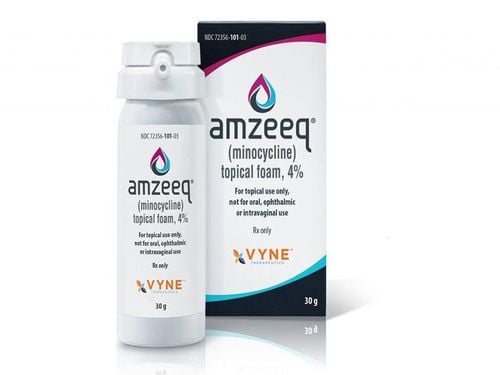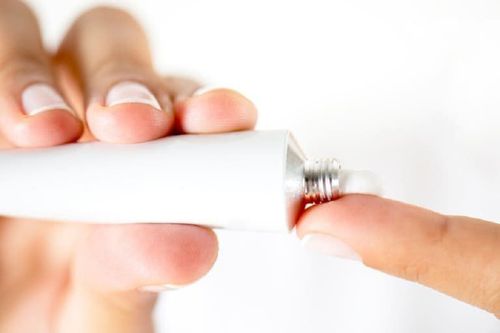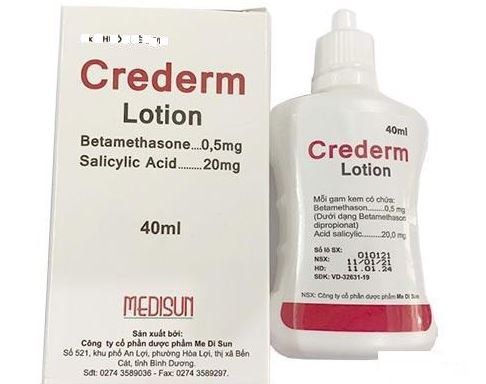This is an automatically translated article.
Tretinacne is an acne medication containing the active ingredient Erythromycin. Tretinacne is formulated as a topical skin cream. The following is some information to help readers better understand what Tretinacne does?1. What is acne?
Acne is a common skin condition that can affect people of all ages. 80% of people aged 11-31 have acne, of which 27% have severe acne and often leave scars. In adolescence, acne is more common in men, but in adulthood, acne is more common in women.
Acne can be related to many factors:
Increased sebum secretion (androgen dependent): The hair follicles, pores at the surface of the skin contain oil glands to keep the skin and hair moist. During puberty, hormones can cause the skin to produce more oil, clog pores and form acne. Sebaceous stasis associated with keratinization disorders: Disrupted keratinization can lead to sebaceous stasis, the formation of microcysts and comedones. Inflammatory response: Some inflammatory agents such as saprophytic bacteria (Propionibacterium acnes, Staphylococcus epidermis, ...) or irritating components of sebum can be the cause of the creation of nodules, papules and acne. pus. Symptoms of acne include: Redness, swelling around the acne skin, and the appearance of small red spots. If the pore is clogged and bursts, the swelling will worsen and the red pimple will be more severe. Acne can be deep inside the skin and cause more severe pain. The most common location for acne is on the face. In addition, acne can appear on the neck, shoulders, back, and chest. Acne and the scars it leaves can affect psychologically with manifestations such as guilt, low self-esteem, stress and depression.
Acne treatment is a coordinated course of treatment and it can take a long time before the desired results are achieved. Acne treatment focuses on the following goals:
Heal existing acne and prevent scarring. Prevents new acne lesions. Reduce psychological stress when acne occurs.
2. What are the effects of Tretinacne?
Tretinacne is a topical skin cream containing 4% Erythromycin, a broad-spectrum macrolide antibiotic. Tretinacne skin cream circulates on the market under 5g, 10g, 15g tubes, effective in treating acne.Besides Tretinacne, there is also Tretinacne-A which is a combination cream of Erythromycin 4% and Tretinoin 0.025%, Tretinacne-A is indicated mainly for the treatment of microcysts or inflammation encountered in acne patients. fish. In addition, Tretinacne-A is also effective in treating papule pustules or cellulite disorders.
3. Pharmacodynamics of Tretinacne
Erythromycin is a Macrolide antibiotic, mainly bacteriostatic effect against both gram-positive and gram-negative bacteria. Erythromycin has almost no effect on gram-negative aerobic bacteria.
Erythromycin is used as a topical skin cream for the treatment of acne by the following mechanisms:
Erythromycin acts on the inflammatory response. Erythromycin acts on bacteria in hair follicles. Erythromycin applied topically to the skin reduces the amount of irritating free fatty acids at the surface of the skin, but the mechanism is controversial.
4. Dosage, how to use Tretinacne
Tretinacne is used by the skin route. Before applying the medicine, it is necessary to thoroughly wash the face or acne-affected skin. Then, apply a thin layer of Tretinacne to the affected area. Apply 1-2 times a day. The average duration of Tretinacne treatment is from 1 to 3 months. If acne recurs, the course of treatment can be prolonged.
5. Contraindications Tretinacne
Tretinacne is contraindicated in cases of hypersensitivity to Erythromycin, or macrolide antibiotics, or to any other ingredient in the drug's excipients.
6. Tretinacne side effects
Side effects when using Tretinacne skin cream are usually local reactions. Patients may experience dry skin when starting to apply Tretinacne. Other undesirable effects that may be encountered are a slight tingling sensation, rash, discomfort, and erythema.
Need to notify your doctor immediately when you experience unwanted effects while taking Tretinacne.
7. Tretinacne drug interactions
Some products may interact with Tretinacne.
Combining Tretinacne with cosmetics containing alcohol can cause dryness or irritation. Tretinacne, when used concurrently with other topical agents for the treatment of acne, may aggravate skin peeling, scaling, or erosion. Tretinacne should not be used concurrently with topical products containing erythromycin or clindamycin because of the potential for competitive binding to the 50S ribosomal subunit.
8. Precautions when using Tretinacne
Avoid letting Tretinacne come into direct contact with the mucous membranes of the eyes, nose, mouth or open wounds. In case of contact, immediately rinse thoroughly with water and seek medical attention. Use caution when using Tretinacne in patients with heart failure, arrhythmia. Pregnancy and lactation: The safety of topical erythromycin has not been established for pregnant or lactating women. Driving and operating machines: There have been no cases of Tretinacne affecting the safety of driving and operating machinery. Above is all information about Tretinacne, patients need to carefully read the instructions for use, consult a doctor / pharmacist before using. Note, Tretinacne is a prescription drug, you need to use it as prescribed by your doctor, absolutely do not self-treat at home.













